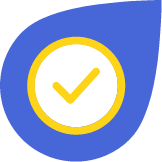How to measure sales enablement performance?
The underlying purpose of sales enablement is, essentially, to improve sales outcomes. While this is an admittedly reductive and oversimplified statement, it holds true and serves the purpose in this context because as soon as you consider this, the need to measure and track sales enablement performance becomes immediately apparent. After all, how would you know if you’ve improved something without measuring it?
However, measuring sales enablement success requires a clear definition and understanding of the key metrics that matter. At first glance, it might be tempting to tie sales enablement success directly to revenue. But focusing entirely on revenue can distract from a nuanced picture that takes account of the multifarious ways in which sales enablement affects a company’s key processes.
Key metrics to track in sales enablement
So, then, with the need for measurement established, what exactly is it you should be measuring? There’s a plethora of metrics you could be tracking, but here are a few key ones that will give you insight into your sales enablement program’s strengths, weaknesses and progress:
-
Competitive win/loss rate
Competitive win/loss rate is different from the overall win/loss rate in that it takes into account only those sales conversations in which you were in direct competition with a rival product or service provider for the prospect’s business. Looking into this metric will uncover information on not only which of your competitors you face off against and how often, but also which of your sales enablement collaterals are working for your teams. It’ll also tell you how you fare against different types of competition; further digging into that will undoubtedly reveal actionable insights that’ll help identify strengths and weaknesses and create more effective sales enablement material.
Competitive win/loss rate = No. of competitive wins / No. of total competitive opportunities
-
Length of sales cycle
The shorter your sales cycle, the more deals you can close within a given period, which maximizes the scope for revenue generation. That being said, actually shortening your sales cycle is no mean feat. There are a number of factors outside your control that could affect sales cycle length, such as the number of stakeholders involved in your customers’ purchase decisions and their communication processes.
What you can do to shorten your sales cycle is to understand which of your campaigns expedite the sales process, what content influences customer decisions and which sales tactics work best for you.
It’s worth noting that shortening the sales cycle is not a quick fix; it’s a long-term objective.
-
New hire ramp-up time
There’s a learning curve in any new job. When it comes to salespeople, though, the learning curve has a significant and direct cost implication; if they’re not working at maximum productivity, that is, in effect, money lost for your organization. The importance of this metric is quite obvious then. The need to quickly ramp up salespeople becomes even more pressing when you consider that average ramp-up time is 4.5 months, while the average SaaS sales rep’s tenure is only 2.4 years.1 The ideal outcome here would be to have all newly hired sales reps be fully on-boarded within a predefined time period that’s acceptable to your organization with all things considered. An effective sales enablement program would decrease ramp-up time and boost productivity.
-
Actual selling time
Studies have shown that sales reps spend just 35% of their time in actual sales conversations with prospects.2 The rest of their time is spent hunting down leads, doing research, tweaking presentations and other such activities. Much like with new hire ramp-up time, there’s a clear cost implication here — time spent on activities outside selling is time wasted, as far as revenue generation is concerned. How do you get around this? Equip your sales reps with everything they need, from updated product content to lead management tools, as required. Even if you’re only adding an extra hour or two of productive time per week, that will quickly add up to an appreciable amount of additional revenue.
-
Quota achievement and distribution
In the absence of a sales enablement program, most of your sales representatives would likely perform reasonably well. Only the very best salespeople, though, would be able to consistently achieve their quotas.
It’s been shown that just a 5% performance increase in the middle 60% of your sales representatives can deliver more than 91% higher revenue as compared to the same 5% performance increase in your top 20% of salespeople.3
If you see a consistent rise in performance across your sales team, there’s no clearer indicator of the success of your sales enablement initiatives.
This is by no means a comprehensive list; sales enablement programs vary widely across industries and businesses, and so do the metrics best suited for each of them. These sales enablement metrics, however, make for a good general starting point, and over a period of time, you will be able to demonstrate the value delivered by your sales enablement program.
References:
- https://blog.bridgegroupinc.com/periodic-table-inside-sales-metrics
- https://www.forbes.com/sites/kenkrogue/2018/01/10/why-sales-reps-spend-less-than-36-of-time-selling-and-less-than-18-in-crm/#78547871b998
- https://www.business2community.com/strategy/shift-performance-curve-make-middle-sales-performers-incrementally-better-01074321





